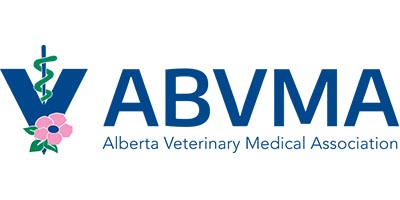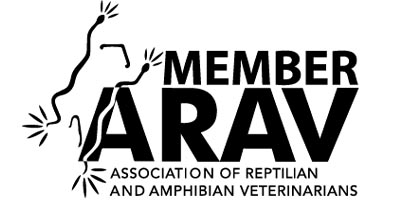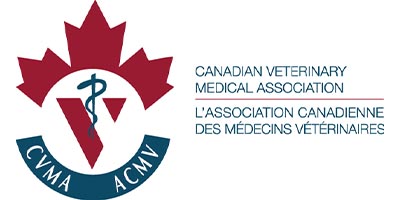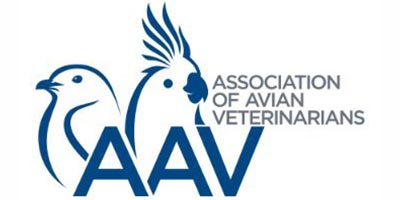With nearly 50 breeds to choose from, rabbits make intelligent, interactive and quiet house pets with an average life span of 7 – 10 years.
DIET:
Rabbits are herbivores and are natural browsers of grasses and other heavy fibrous materials. It is the fiber portion of the diet that drives a rabbit’s digestive tract and keeps it healthy. Rabbits on a high fiber diet maintain a normal digestive tract transit time that in turn keeps the pH balance of the digestive tract at a proper level. The normal pH balance helps maintain a normal bacterial population in the digestive tract. Any disruption in transit time, pH level, or bacterial population results in an abnormal state, clinically evident as diarrhea, soft or mucous coated stools, inappetence, or bloating. Rabbits produce a special dropping called a cecotrope. Directly from the cecum (the fermenting vat of the digestive tract), the cecotrope is loaded with amino and fatty acids and other nutrients that the rabbit is meant to eat and ‘recycle’. Normally, the rabbit eats its cecotropes as they are released at the anus, typically 4 hours after a meal and following an undisturbed rest period (hence the term ‘night feces’).
Protein in an herbivore diet comes from the leaves and stems of certain plants. Protein is necessary to provide the building blocks for muscle and tissue growth and should be provided for growing, pregnant or lactating rabbits. However, many commercial rabbit diets are based on protein levels designed for rapid growth and are not appropriate for the pet rabbit. Persistent high dietary protein typically results in an altered digestive tract rate, obesity, poor tooth wear, decreased water intake, a reduced appetite for cecotropes and an increased tendency to chewing cardboard, carpet, or furniture. Choosing a good rabbit diet, therefore, is based on content and balance of both fiber and protein in the diet.
Grass Hay: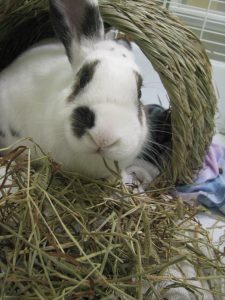
Grass, or non-legume, hay should make up the bulk of a rabbit’s diet and be available at all times to all rabbits past weaning. Grass hays are rich in nutrients, high in fiber, and provide the low energy diet necessary for the healthy motility of the rabbit’s digestive tract. Loose hay promotes the natural chewing activity necessary to wear down the rabbit’s continually growing teeth and helps satisfy the rabbit both physically and mentally. Typical grass hays include timothy, oat, brome, meadow and orchard grass and feeding a variety of hay types is recommended.
Legume Hay:
Alfalfa hay is one of the legume hays. Legume hays are rich in protein, calcium and calories and because of this, are only appropriate for rabbits of a certain age or reproductive status. Used inappropriately, this calorie rich hay can contribute to digestive upsets, obesity, and urinary problems. Legume hays should only be fed if recommended by a veterinarian.
All hay should be sweet smelling and dry and stored in a cool dry area with good air circulation. Hay can be offered to the rabbit in hayracks, boxes, or stuffed into toys or toilet paper rolls to provide foraging enrichment. Since rabbits typically pass stool while they are eating, some hay in a rack above the litter box can help train the rabbit to use the litter box. Grass hay should make up the majority of a rabbit’s diet and will help prevent many diseases in rabbits. Note that straw is without nutritional value and should not be fed to rabbits.
Fresh Green Foods:
Fresh greens are an important part of a rabbit’s diet. Not only do they provide a variety of micronutrients, they provide water in the diet. Greens should be offered daily, by slow and steady introduction and after the rabbit’s introduction to hay. Any fresh food that causes a persistent soft stool should be discontinued. Although an important addition to the diet of a rabbit, greens should never make up the total diet, as this will cause nutritional deficiencies.
Greens should be washed, organic when possible and offered in a variety daily. Once a rabbit is used to the greens, a maximum of 1 packed cup of greens per 1 kg of body weight can be fed daily. Safe greens include: broccoli (leaves and stems), chicory, dandelion greens and flowers, romaine, green or red leaf lettuce, watercress, celery leaves, collard and mustard greens, escarole, kale, basil, parsley, carrot tops, beet tops, radicchio, and bok choy.
Treat foods:
In nature, depending on the time of year, a rabbit may have access to certain foods or flowers. Since these are not regular items in their diet, they should be offered in limited quantities. Any diet item that causes a soft stool should be removed from the diet. These food items should be viewed as treats only and should not make up more than 1 tablespoon per 1 kg of body weight daily. Treats include: blueberries, blackberries, raspberries or strawberries, carrots, melons, organic (not florist) garden flowers such as roses, nasturtiums, or pansies, papaya or pineapple.
Never feed:
Foods high in starch or fat can cause marked digestive tract upsets. Avoid crackers, bread, grains, seeds, peas, beans, cereals, oats, nuts, and chocolate flavoured items. Avoid feeding dehydrated fruits (including raisins), bananas or grapes because of the concentrated sugar in these foods. Many commercial rabbit treats contain sugars and should be scrutinized before feeding.
Pellets:
Commercial pellets should be offered as a measured portion of a rabbit’s full diet and should make up the smallest portion (10-20%) of the total daily diet. Overfeeding pellets can lead to obesity, a sluggish digestive tract, overgrown teeth, urinary tract disease and boredom leading to inappropriate chewing behaviours. Increases in dietary pellets may be indicated in young and growing rabbits, breeding or lactating rabbits, for weight gain following a debilitating illness, or in households where there is an owner allergy to hay, but these increases should be made under veterinary recommendation.
It is currently recommended that a dietary level of 16% protein is suitable for maximum growth and this should be reserved for young bunnies. These pellets are typically alfalfa based. After the first six months of age, pellets offered should be composed of less than 16% protein, 25% or greater fiber, 2.5% or lower fat, and less than 1% calcium. These pellets should be made of timothy or other grass hays. All pellets should be checked for mold, odor, sweetness, and milling date.
Typical daily pellet amounts should equal approximately ¼ cup of pellets per 2 kg of body weight daily either fed once a day, or divided into two feedings. A daily pellet ration can even be given out as individual pellets used as a training tool!
Although the pet industry has attached phrases such as ‘gourmet, deluxe and supreme’ to many rabbit pellets brands, any bag of pellets that also contains seeds, nuts, grains or dried fruits should be avoided as these items cause digestive tract upset, dental disease and obesity. Rabbits may become ‘addicted’ to a diet or diet item and may resist converting to a more appropriate diet. In these cases, conversion processes to a more appropriate diet should be slow, guided by a veterinarian, and both the rabbit’s food intake and the stool output should be measured.
Water and Supplements:
Rabbits should have access to fresh clean water at all times. Drinking from a bowl often promotes increased water consumption, but either a bowl or bottle should be available at all times. A healthy rabbit does not need vitamin supplementation and both mineral blocks and salt licks are unnecessary.
HOUSING:
It is inappropriate to keep a rabbit confined to a cage all of the time. Daily exercise is vital for both the physical and mental health of a pet rabbit. A confined rabbit can become obese, develop hock sores, poor bone density and weak muscle tone, can suffer digestive and urinary tract abnormalities and can exhibit abnormal behaviours. More and more, rabbits are kept as house pets in either a rabbit proofed area of the house or with supervised time out of a penned area.
When allowed access to the home, it is important to ensure all areas are bunny-proofed. Ensure the area is free of electrical cords and wires and houseplants are out of reach. Safe flooring provides traction and padding for the rabbit. In non-carpeted households, providing long narrow carpets to act as ‘runways’ allows the rabbit safe passage. Rabbits are chewers, so ensure access to furniture legs or curtain bottoms is prevented and provide toys and other foraging items for environmental enrichment.
Because rabbits burrow when they rest, having a smaller ‘home base’ will provide security. Free run rabbits can be provided with a box, basket, kennel or cage bottom in which to rest. Housed rabbits can be kept in any enclosed, easily cleaned cage kept open within a penned off area or closed on its own. Cages should be large enough to ensure the rabbit has enough space to move about, stand on its hind legs without touching the top and stretch out completely. There should be enough space for both a nesting and a litter area. Bedding should be thick enough to prevent feet and leg problems and typical products include wood shavings (such as aspen), hay mats, recycled paper products or towels or blankets. Do not use corncob bedding or scented wood shavings (never use cedar) and remove any cloth bedding if the rabbit chews it. If the cage bottom has wire mesh, ensure the mesh is small enough to prevent injury to toes and feet and provide a wooden platform for the rabbit to stand on. Soiled bedding should be removed daily. Rabbits can be trained to use a litter box and this should also be cleaned daily. Preferred litters include compressed pine pellets, Yesterday’s News®, or any non-clumping, dust free cat litter.
Toys:
With imagination and creativity, an environment that will stimulate, challenge and help prevent boredom in a rabbit is easy to create. Items that are safe to be used as toys include paper bags, cardboard boxes (filled with hay or hidden treats), untreated wicker baskets, straw mats, whisk brooms, old telephone books, ramps for climbing, towels for bunching up and tubes and tunnels. Toys, mats, bungalows and tunnels made of timothy hay all add to environmental enrichment. Hiding food items beneath or behind objects allows the rabbit to ‘forage’ for food and anchoring items mimics the ‘resistance’ that grass and browse items would have when grazed on.
When choosing toys, avoid materials that could have toxic coatings, dyes or glue, as well as anything with fibrous materials that may block a rabbit’s digestive tract. Rabbits will fetch favourite toys and love to play a game of ‘run away’.
Going Outside: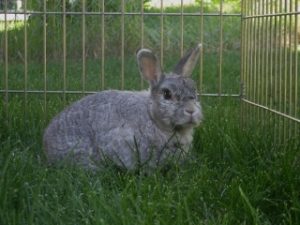
Taking a house rabbit outdoors has many benefits. The natural sunlight will help with Vitamin D and calcium metabolism, aiding in healthy bones and teeth and the rabbit will exercise more and browse, as it would do naturally. Ensure the yard is escape proof, that predators do not enter the yard, and that there are no poisonous garden plants, such as lilies, rhubarb, or foxglove within reach of the rabbit. Ensure no pesticides or herbicides have been used and provide shade, shelter and fresh water. Rabbits can suffer from heat stroke, mosquito bites and fly strike, so monitor your pet carefully. Until a rabbit is used to being outside and all possible escape routes are blocked, rabbits should be supervised when out. A microchip implant is recommended for any outdoor rabbit as a form of identification, should it accidentally escape the yard. Many rabbits can be trained to hop on a harness and leash.
Outdoor hutches must be secure from roving cats and dogs and provide adequate heat in the winter and shade in the summer. Water containers should be changed 2 – 4 times a day to prevent freezing or loss from evaporation.
PHYSIOLOGY: Average Life span: 7 – 10 + years
Sexual maturity: 5 – 8 months
Gestation: 28 – 36 days
Average litter: 4 – 7
Weaning age: 4 – 6 weeks
Mature male rabbits often fight when housed together. It is recommended that all rabbits other than breeding stock be spayed or neutered. Female rabbits are prone to cancer of the uterus after two years of age. Neutering male rabbits prevents territorial marking as well as testicular abscesses, tumors and scrotal dermatitis.
HANDLING:
When handling a rabbit, always support the back legs, as rabbits are prone to back injuries. Rabbits should have a yearly health exam and should be checked at least once for internal parasites. Nail trimming and grooming may be necessary through out the year.
COMMON PROBLEMS:
Malocclusion: Rabbits have continually growing teeth designed to handle a high fiber diet. If teeth do not wear properly, overgrowth can result. Any signs of trouble chewing or eating, drooling, or decreased stool production warrant an examination to check the incisors (front teeth) and the molars (back teeth) and trim them when necessary.
Pasteurellosis: This is a broad term describing diseases caused by the bacteria Pasteurella multocida. The majority of rabbits act as carriers, showing no signs; however, if stressed, one or more diseases can occur including “snuffles” (runny eyes and nose), pneumonia, head tilts (due to ear infections), abscesses, and reproductive disorders. Testing and antibiotics are recommended. Treatment success can be frustrating.
Coccidiosis: A common parasite in rabbits, Coccidia invades the liver or the lining of the intestine. Stool samples on all new rabbits can single out carriers and treat positive cases.
Mites: Rabbits can get both ear and fur mites causing crusts or scales deep within the ear canal or hair loss and dandruff along the back or rump of the rabbit. A skin scraping helps diagnose the problem and both mites are treatable.
Gastrointestinal (GI) stasis: Gut slowdown, manifested by a decreased appetite and decreased stool production, usually begins slowly. Formally blamed on ‘hairballs’, GI slow down is usually related to deficient fiber in the diet. Rarely, full gut blockage and bloating can occur and this can be life threatening. Early intervention is the key to successful treatment of any GI disruption.
Bladder stone/crystals: Rabbits naturally have a large number of crystals in their urine. This is typically noticed when a rabbit urinates on paper and a white, crystal compound appears when the urine dries. Occasionally, a rabbit may develop so many crystals that they congregate to form a bladder stone or begin to form ’sludge’ in the bladder. Warning signs include blood in the urine, pain when urinating, decrease in appetite, constant tail cocking or posturing to urinate, and a clay coloured deposit around the urinary opening. Any of these signs warrant an immediate veterinary visit.
The rabbit is a prey species and instinctively hides its problems, making early detection more challenging. Any abnormal behavior or problem that is noted for more than 24 hours warrants a visit to a veterinarian. Every pet rabbit should visit a veterinarian experienced in the care of rabbits once a year, to aid in early detection of problems and allow a chance to update owners in the latest in care and husbandry.
THIS INFORMATION IS MEANT AS A GUIDELINE ONLY AND IN NO WAY REPLACES CONSULTATION WITH A VETERINARIAN.


